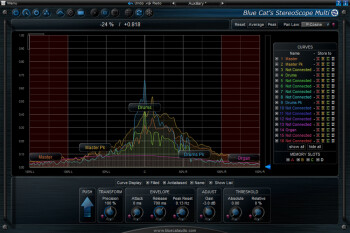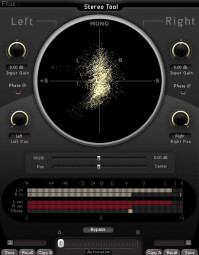Following up on our series of articles dedicated to useful tools for mastering at home, this time we will focus on plug-ins that allow you to analyze the stereo image.
Working with the stereo image in mastering is a very delicate matter. On the one hand, you probably want your song to sound larger than life, but, on the other hand, you need to always bear in mind that your songs will most probably be heard on less than optimal conditions in terms of stereo, be it due to the listener not being in the center of the left and right speakers or, even worse, due to a strictly mono listening environment. As a consequence, it is extremely important to always check the mono compatibility of your masters if you want to offer the best experience to your listeners, regardless of their listening environment.
To make sure that your song can pass this hurdle, the best thing you can do is check your masters in mono to see what happens. If you want to be a purist, it’s not uncommon to go so far as to turn off one of the monitors to actually hear the signal through only one speaker. Once that’s done, you only need to listen carefully to hear if any elements have gone down the drain. The problem is that it all looks very nice and easy on paper but, in practice, within a Home Mastering situation, there is always the inherent problem of an imperfect listening environment. Fortunately, once again there are plug-ins to help you tackle this issue.
The first and most simple in the genre is the so-called phasemeter, which allows you to see the correlation between the left and right signals. When the latter are similar, it can go up to +1, when they are completely different (out of phase), it goes down to –1. To avoid phase problems and, thus, mono compatibility issues, the best is for the phasemeter to oscillate between 0 and +1.
For a more detailed analysis, you should use a vectorscope or goniometer. Like the phasemeter, a vectorscope displays the degree of correlation between the left and right channels, but it shows a graphical representation in two dimensions. So, a signal that is completely mono will translate into a vertical line, while a signal whose left and right channels are completely out of phase will produce a horizontal line. In order to preserve mono compatibility, the best would be to see a sort of “cloud” representation in diagonal form.
Before we finish, we will mention a plug-in that is unique in its genre, as far as we know, and which is extremely useful for mastering: The Blue Cat Audio StereoScope Multi. This tool is very easy to use and, as its name implies, it allows you to visualize the stereo image of several instances of the plug-in within one single window. This makes it really easy to realize how a given processor affects the stereo image of a signal by placing an instance of StereoScope Multi before and another one after the processor in question.
Tools of the trade
As usual, here you have a non-exhaustive list of plug-ins related to today’s topic:
- Flux:: Stereo Tool
- Schwa Schope
- PSP StereoAnalyser
- iZotope Insight
- Blue Cat Audio Blue Cat’s StereoScope Multi


